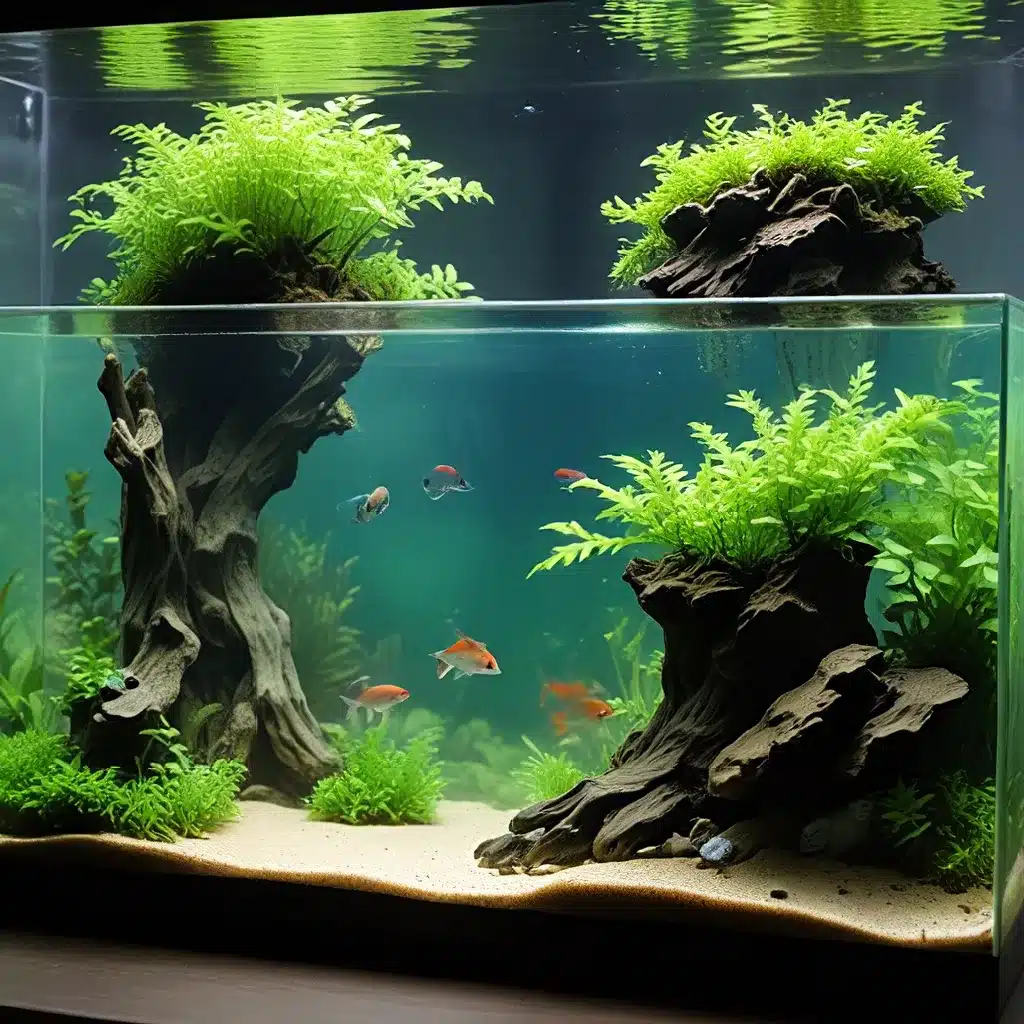
Understanding the Nitrogen Cycle: The Foundation for a Healthy Aquarium
Maintaining a thriving aquarium ecosystem is akin to cultivating a delicate garden, requiring careful attention and a deep understanding of the underlying processes that sustain life. At the heart of this ecosystem lies the nitrogen cycle, a continuous process that transforms harmful waste products into less toxic compounds, ultimately creating a balanced environment for your aquatic inhabitants.
The nitrogen cycle is orchestrated by two key players: Nitrosomonas and Nitrobacter bacteria. Nitrosomonas are responsible for converting ammonia (a highly toxic compound) into nitrite, while Nitrobacter then transform the nitrite into nitrate, a less harmful substance that can be effectively removed through water changes. This intricate dance between these bacterial colonies is the foundation upon which a successful aquarium is built.
Establishing the Nitrogen Cycle: A Step-by-Step Approach
Setting up your aquarium for long-term success begins with the cycling process, a critical phase that allows these beneficial bacteria to establish a robust population capable of maintaining water quality. By following a methodical approach, you can ensure a smooth transition from a sterile tank to a thriving aquatic ecosystem.
Step 1: Prepare the Tank
Start by assembling your aquarium equipment, including the tank, stand, lighting, and filtration system. Carefully install and configure these components, ensuring they are functioning correctly. Next, add your substrate (such as sand or gravel) and strategically place any live rock or decorations to create an aesthetically pleasing aquascape.
Step 2: Fill the Tank with Water
Prepare a saltwater solution by mixing marine-grade salt with dechlorinated or reverse osmosis/deionized (RO/DI) water to achieve the desired salinity level, typically between 1.023 and 1.025 specific gravity. Slowly fill the tank, taking care not to disturb your carefully crafted aquascape.
Step 3: Start the Cycling Process
The cycling process can be initiated by adding a small amount of ammonia to the tank, which will serve as food for the Nitrosomonas bacteria. This can be achieved by using a pure ammonia solution or even by introducing a piece of uncooked, unseasoned table shrimp, which will decompose and release ammonia into the water.
Alongside the ammonia source, consider adding a beneficial bacteria supplement, such as Seachem Stability, to jumpstart the nitrogen cycle. These supplements contain concentrated colonies of Nitrosomonas and Nitrobacter, accelerating the establishment of your tank’s biological filtration.
Step 4: Monitor and Test
Patience is key during the cycling process, as it can take anywhere from 4 to 6 weeks for the bacterial colonies to become fully established. During this time, regularly test your water parameters, including ammonia, nitrites, and nitrates, to track the progress of the cycle.
As the cycle progresses, you’ll notice a series of changes in your water chemistry. Initially, ammonia levels will spike as the Nitrosomonas bacteria begin to multiply. This will be followed by a rise in nitrite levels as the Nitrobacter start to thrive. Finally, as the cycle nears completion, you’ll see a decrease in both ammonia and nitrite, with a corresponding increase in nitrate levels.
Step 5: Maintain Water Quality
Once the cycling process is complete, and your water parameters indicate a stable nitrogen cycle (with trace ammonia, zero nitrites, and manageable nitrate levels), you can begin the process of adding livestock to your aquarium.
However, before introducing any inhabitants, it’s essential to perform a 50% water change and dose your tank with the beneficial bacteria supplement again. This will ensure a clean, safe environment for your new aquatic friends.
Ongoing Maintenance: The Key to a Thriving Aquarium
Maintaining a healthy, balanced aquarium doesn’t end with the cycling process; it’s an ongoing commitment that requires diligence and attention to detail. Regular water changes, monitoring of water parameters, and targeted maintenance tasks are crucial for the long-term success of your aquarium.
Establish a Water Change Routine
The frequency and volume of your water changes will depend on the bioload (the amount of waste produced) in your aquarium. As a general guideline, start with a 10% weekly water change and monitor the nitrate levels in your tank. If the nitrates continue to climb, gradually increase the water change volume or frequency to maintain them within the recommended range of under 20 ppm.
Test and Maintain Water Parameters
Regularly test your water for parameters such as pH, temperature, salinity, ammonia, nitrites, and nitrates. Use this data to identify any fluctuations or imbalances and make the necessary adjustments to your maintenance routine. Keeping a close eye on these critical parameters will help ensure the health and well-being of your aquatic residents.
Optimize Filtration and Water Flow
Effective biological filtration is essential for maintaining water quality. Ensure your filtration system is functioning properly and consider upgrading or adding supplemental equipment if needed. Additionally, maintaining appropriate water flow and circulation within your aquarium will help distribute nutrients, gases, and beneficial bacteria throughout the ecosystem.
By following these cycling and maintenance best practices, you’ll lay the foundation for a thriving, balanced aquarium that will serve as a captivating centerpiece in your home or office. Remember, the journey of aquarium keeping is an ongoing adventure filled with opportunities for learning, discovery, and the sheer joy of watching your underwater oasis flourish.
If you’re ready to embark on this rewarding endeavor, be sure to explore the wide selection of aquarium equipment, livestock, and aquascaping supplies available at King Aquarium. Our team of experienced aquarists is here to guide you every step of the way, ensuring your aquarium becomes a thriving, self-sustaining ecosystem that brings the beauty of the underwater world into your own living space.

